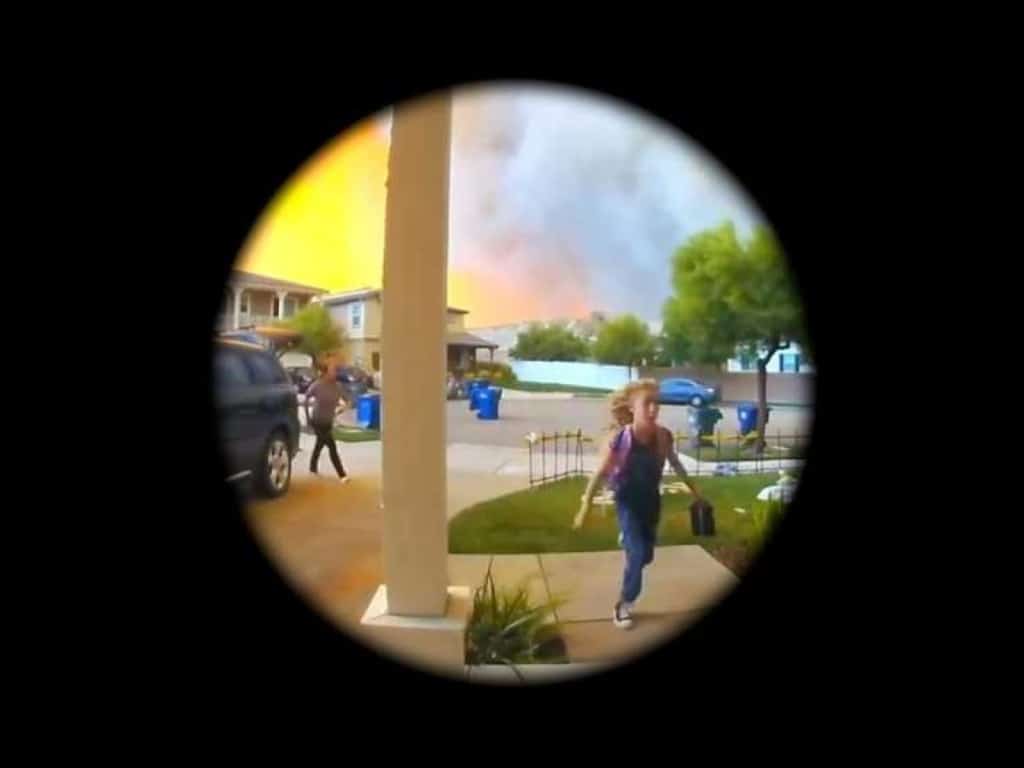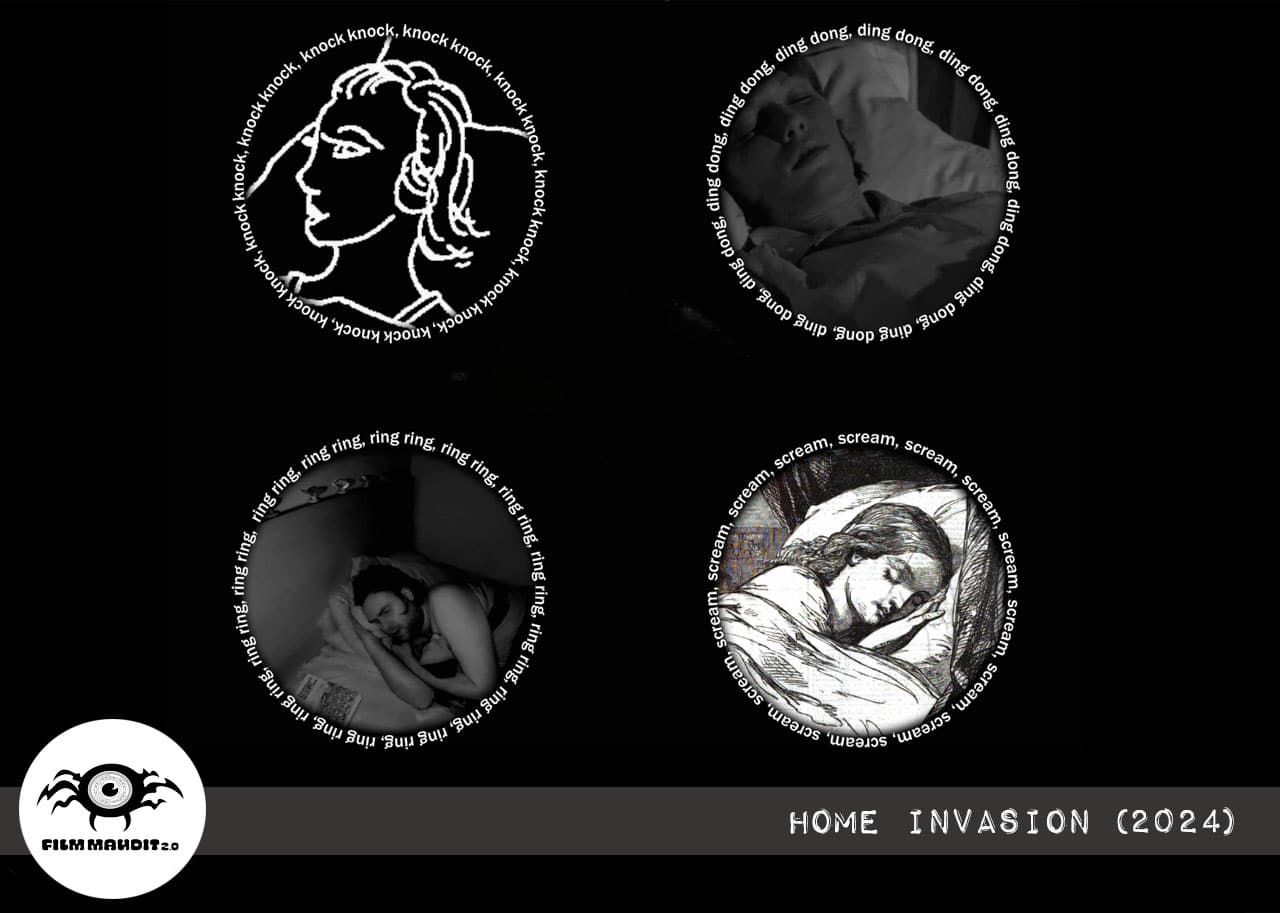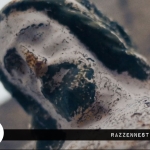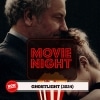More chilling than it has any right to be, “Home Invasion” is a video doorbell documentary transformed into a found footage nightmare.

I never imagined a documentary about something as mundane as the video doorbell could be so utterly captivating and, most surprisingly, truly unnerving. Having the pleasure of screening this film as part of the Film Maudit 2.0 Film Festival, I furiously scribbled at the top of my notepad used to compile my review thoughts, “Why is this so damn scary?”
Told in simple but chilling vignettes with visuals shot entirely through the fish-eyed lens of a peephole, the film, written and directed by Graeme Arnfield, features true stories that helped shape the creation and proliferation of today’s modern home surveillance technology. It moves from the rise of Amazon’s RING back in time to the invention of the doorbell in 1818.
There’s a common refrain throughout each of the stories: fear and the way technology exploits our fears for profit.
In the film’s chilling prologue, text on a black screen intercut with crude diagram drawings introduces us to the story of Marie Van Britten Brown, a black nurse haunted by nightmares of a home invasion.
A deeply unsettling, discordant score immediately puts viewers on edge and creates a sinister undertone that belies the seemingly straightforward subject matter.
Marie’s house was frequently burgled, and police failed to help — often responding with racism and violence, if they responded at all. She invented something to stop her nightmare: a motorized video camera capturing everything happening on her doorstep and transmitting it via radio signals to every TV in the house, eventually connecting the feed to local authorities.
Rather than a triumphant story of innovation and ingenuity, the story emphasizes the dark side of Brown’s legacy and how a desire for safety became a consuming obsession, amplifying feelings of fear and isolation — and terror that lies just beyond the imagined fortress of our front doors.
Inspired by the anxieties of living in poor, underrepresented communities, Marie’s invention was later bought and sold to give affluent suburban homeowners peace of mind; protecting homes, she’d never be allowed inside of.
After opening credits, we meet Jamie, a failed and frustrated inventor who creates Doorbot, a doorbell notification system designed to alert homeowners to package deliveries.

Marketed as a tool of convenience, it was a flop. However, when Jamie changed his marketing strategy and began focusing on safety and surveillance, changing the name of his creation to RING, he struck gold.
Two years later, Amazon bought RING, and Jamie became a multi-millionaire.
Inadvertently creating a surveillance network, Jamie’s invention led to a database of digital footprints that could be leveraged and sold by tech companies and accessed by law enforcement. Its emphasis on the sharing of footage captured by the cameras created digital town squares for mob justice fueled by racial and social discrimination.
While there’s no evidence that RING makes anyone safer, it has led to increased anxieties and a further emphasis on the boundary between self and other.
Other stories in this nightmarish journey include the creation of the first home invasion movie (The Lonely Villa, 1909) by D.W. Griffith, the problematic filmmaking pioneer behind The Birth of a Nation.
We also learn about the invention of the doorbell born out of the Industrial Revolution, which prioritized convenience over quality and destroyed the livelihoods of many while forcing many others into hazardous and exploitative working conditions.
This period in history is especially vexing in the context of modern times when we now face a new Industrial Revolution with the rise of generative artificial intelligence where machines can think, learn, self-replicate and master many tasks once reserved for humans.
Ultimately, Home Invasion is much more than a fascinating history lesson.

Its real power comes from what it reveals about our collective fears, our relationship to technology, and the way our fears can be used against us for the profit of others.
At a brisk 90 minutes, it never outstays its welcome. The film’s stripped-down, lo-fi approach is impressively adept at getting under your skin and holding you captive in its ghastly grip.
The rise of RING and home surveillance and their now nearly ubiquitous adoption can be traced to a very primal and predominant human fear: the world wishes us harm, and nowhere is safe, not even our sanctuary.
That’s the unsettling truth that makes a doorbell documentary a mightily effective horror film.














Follow Us!